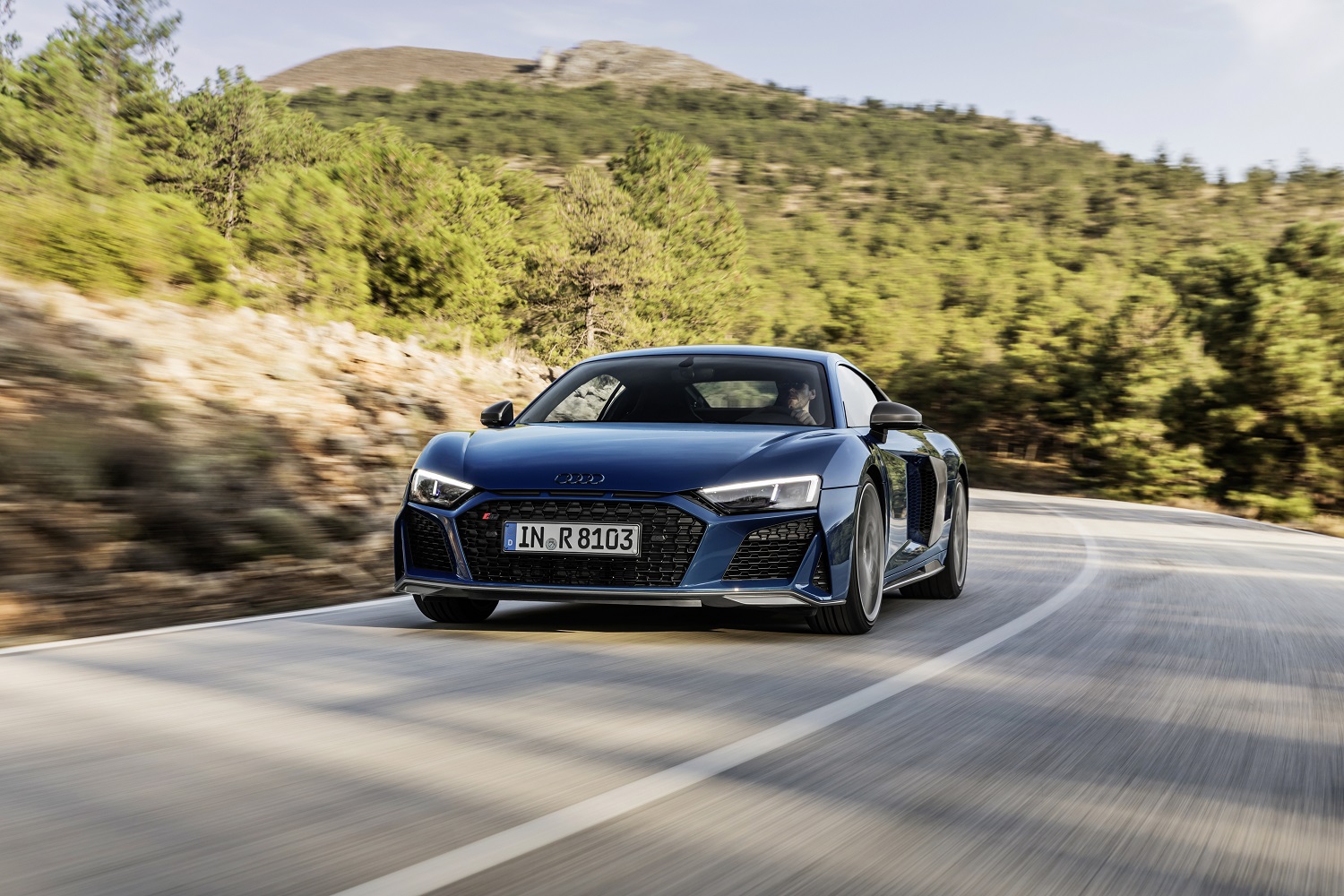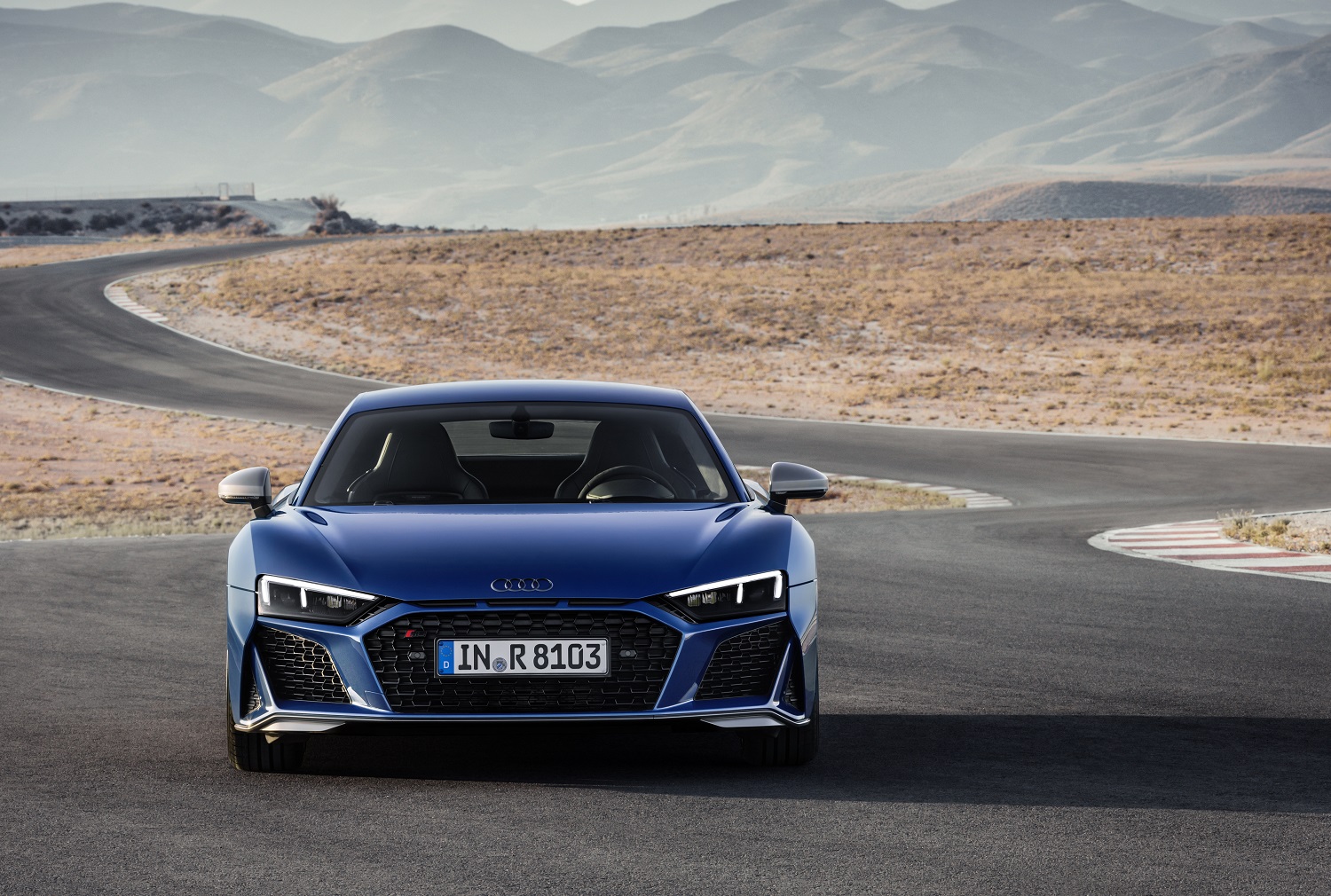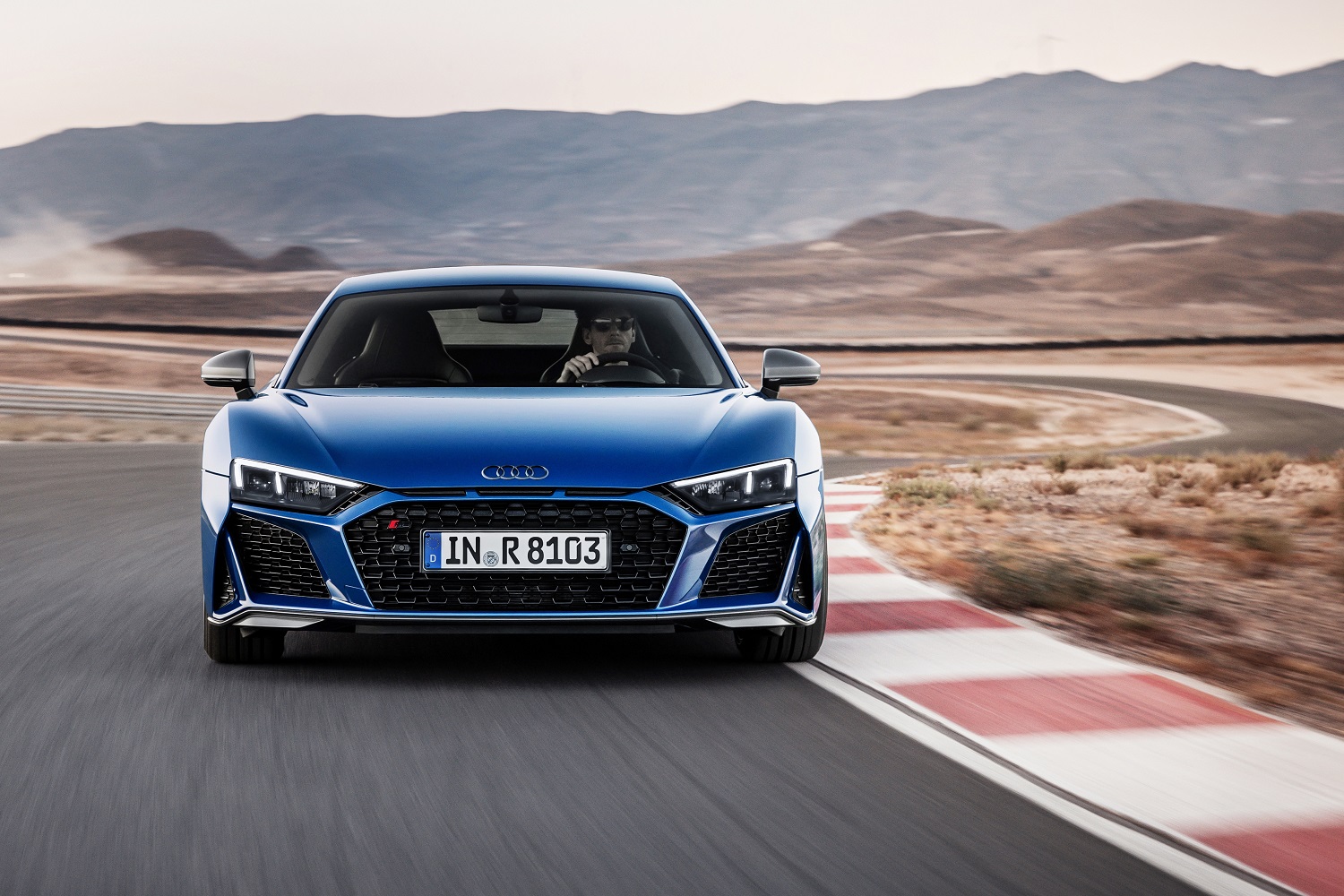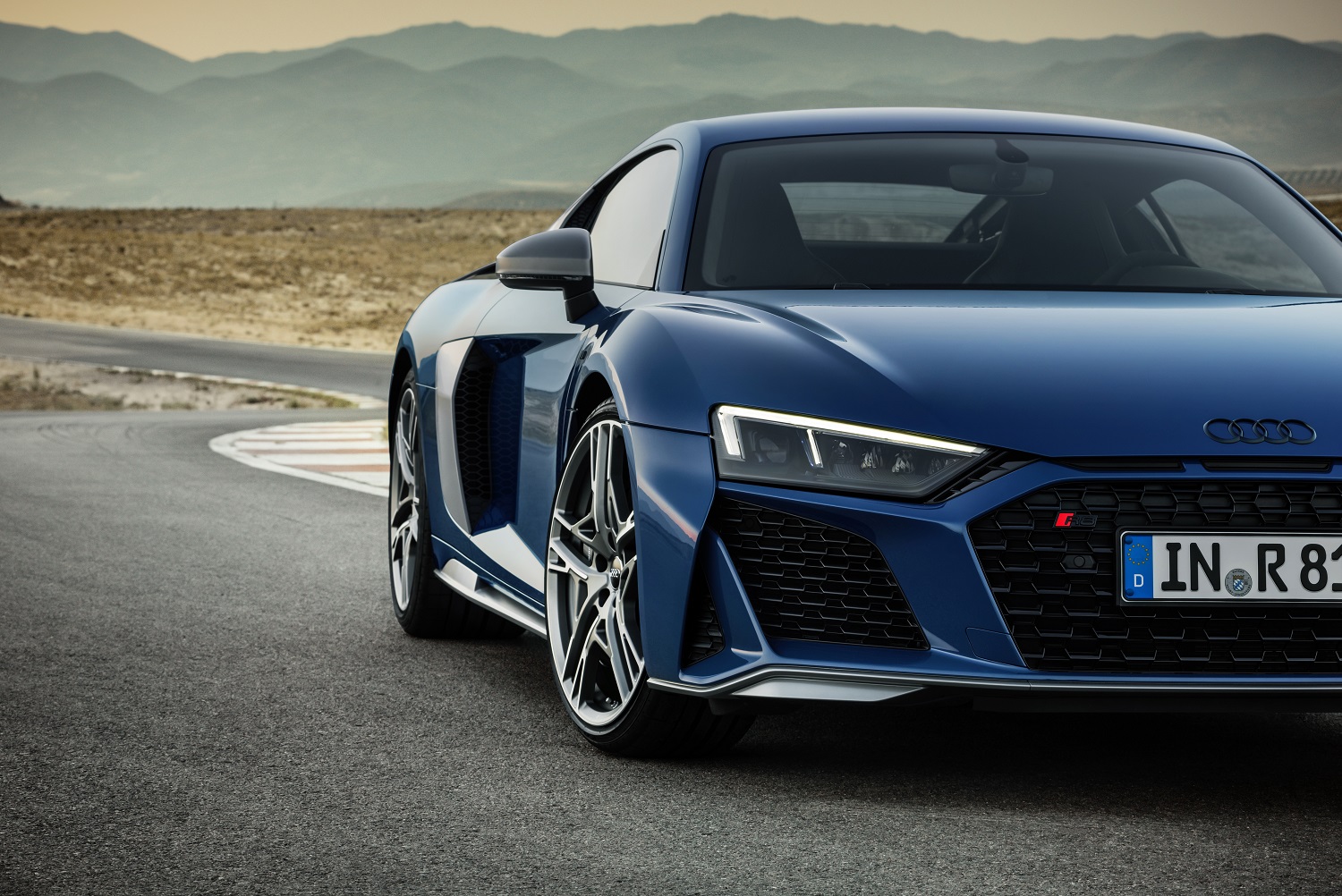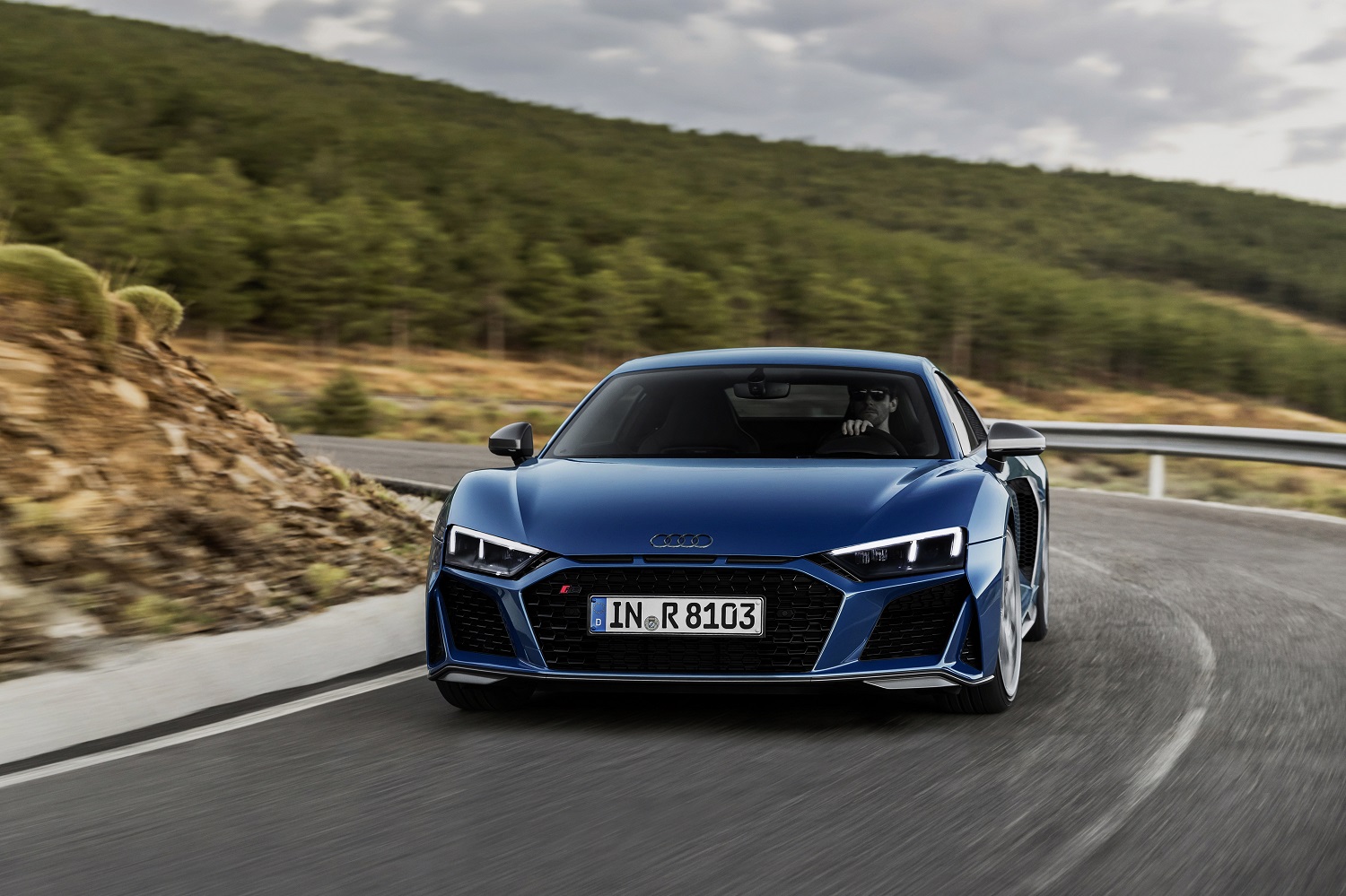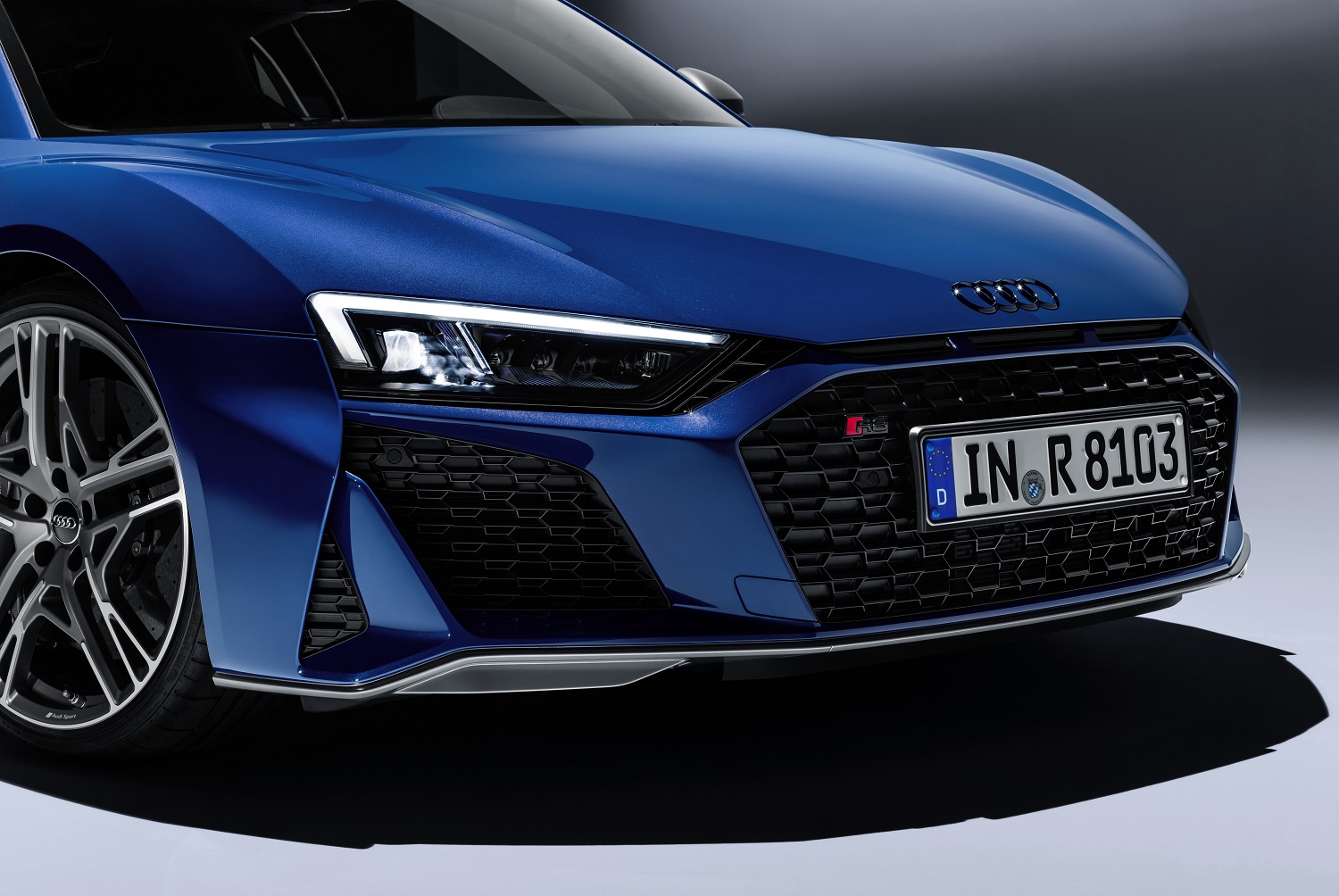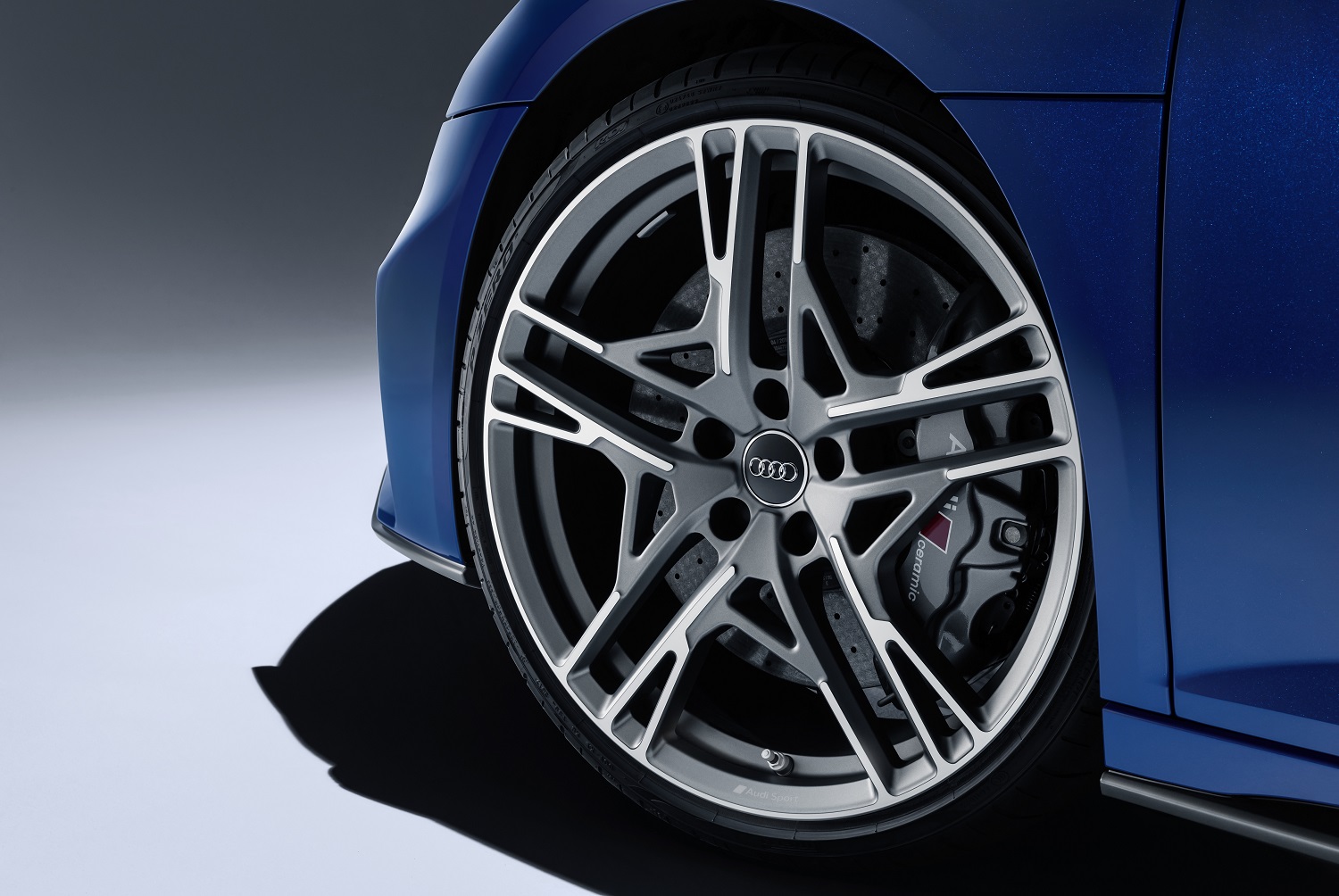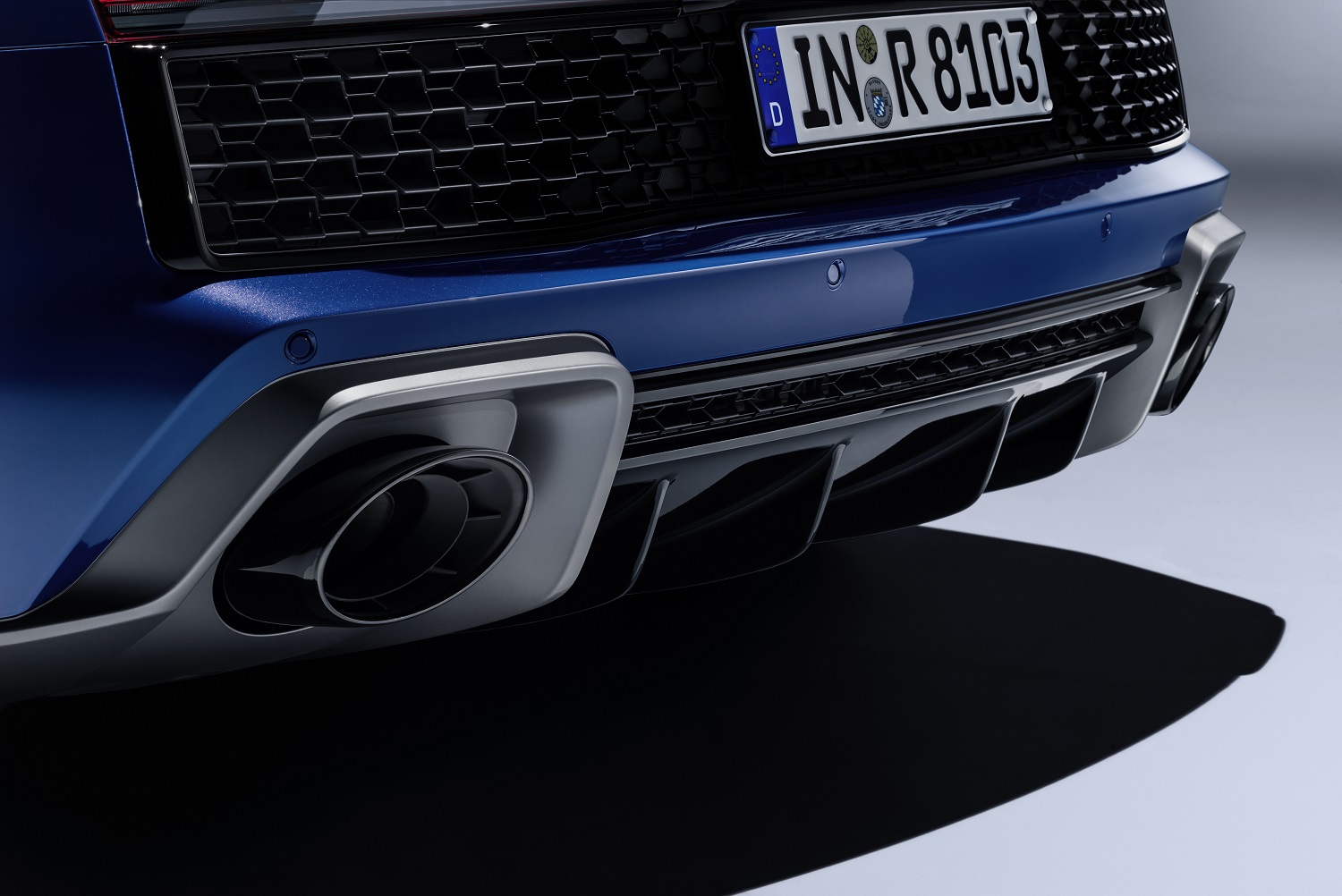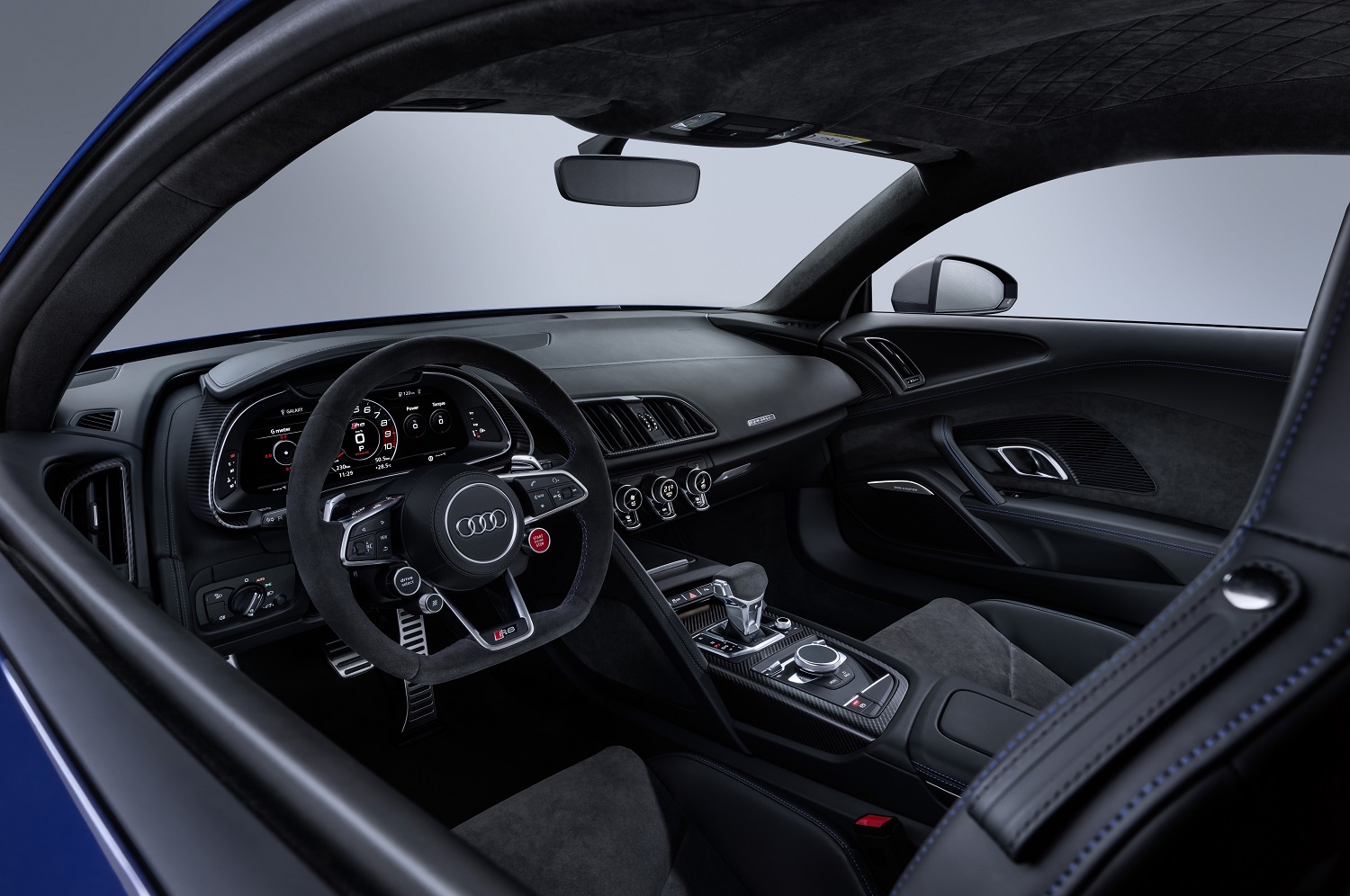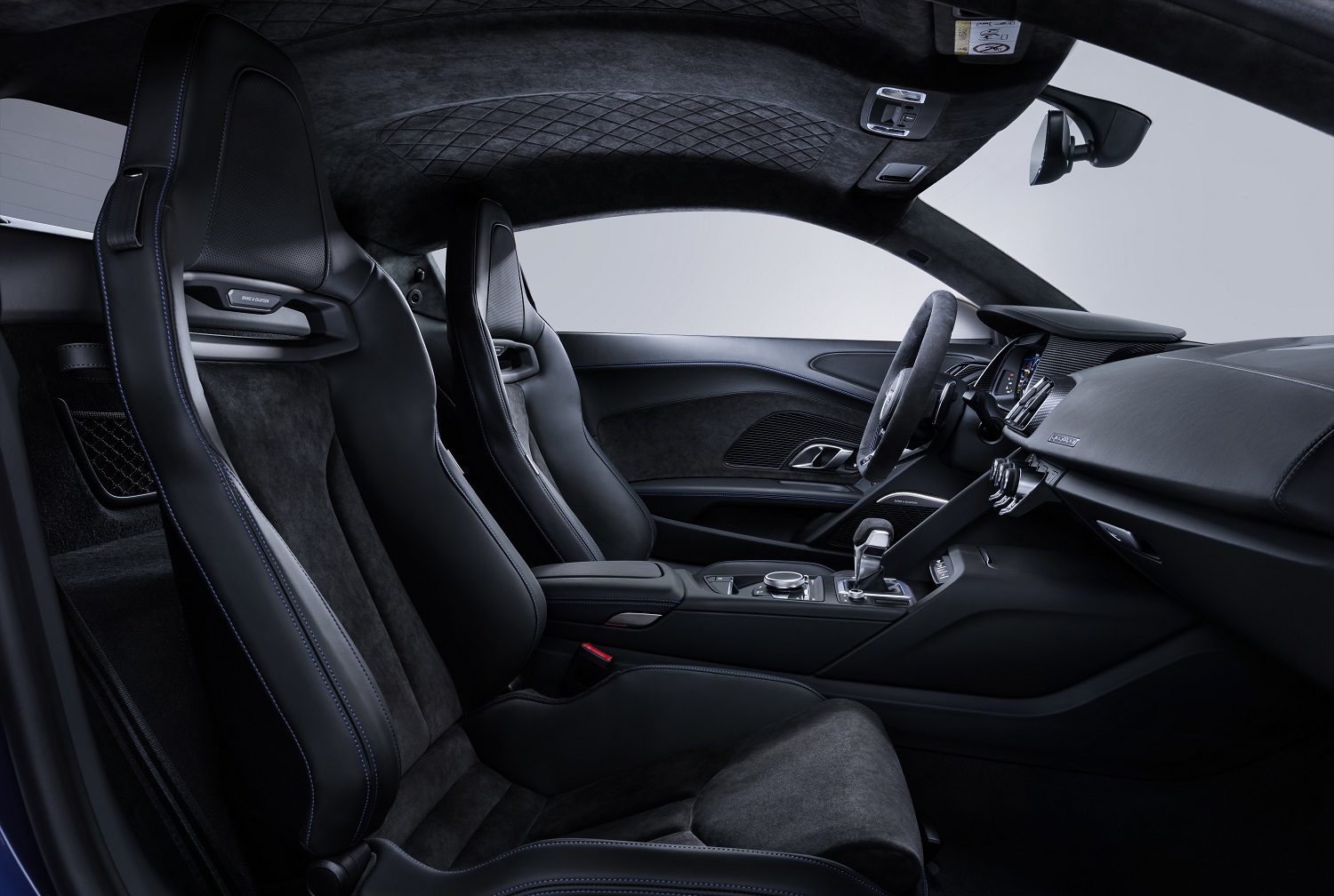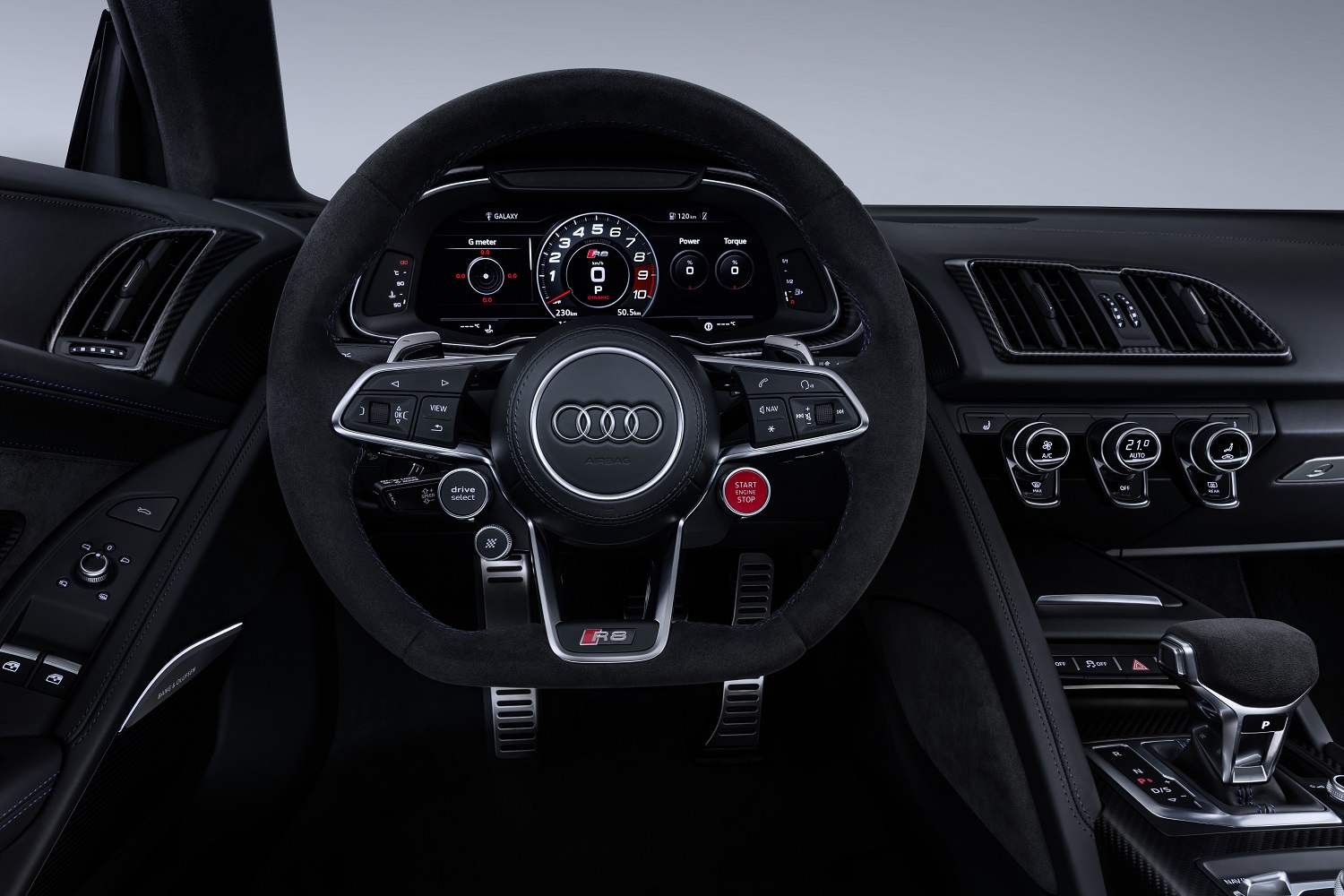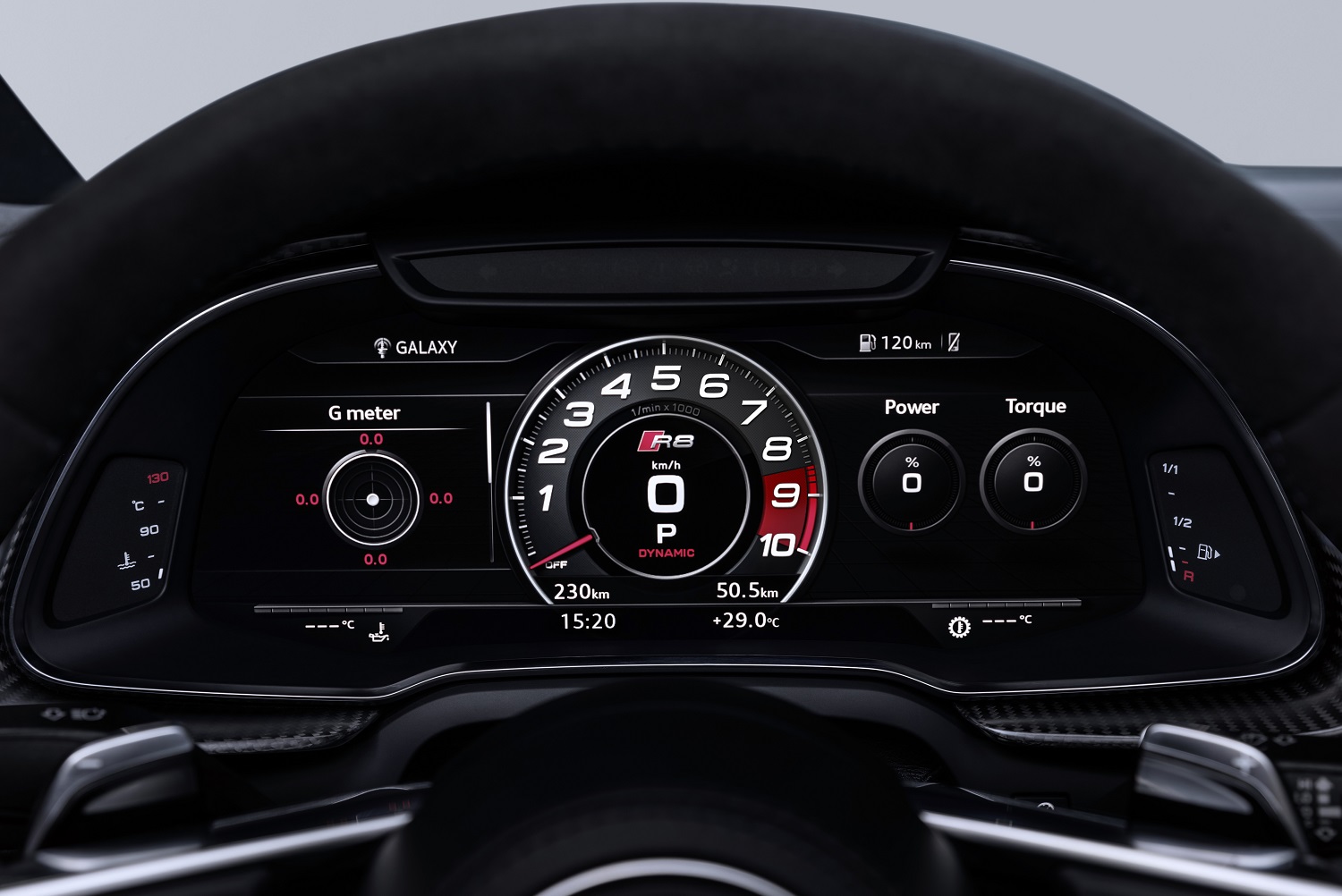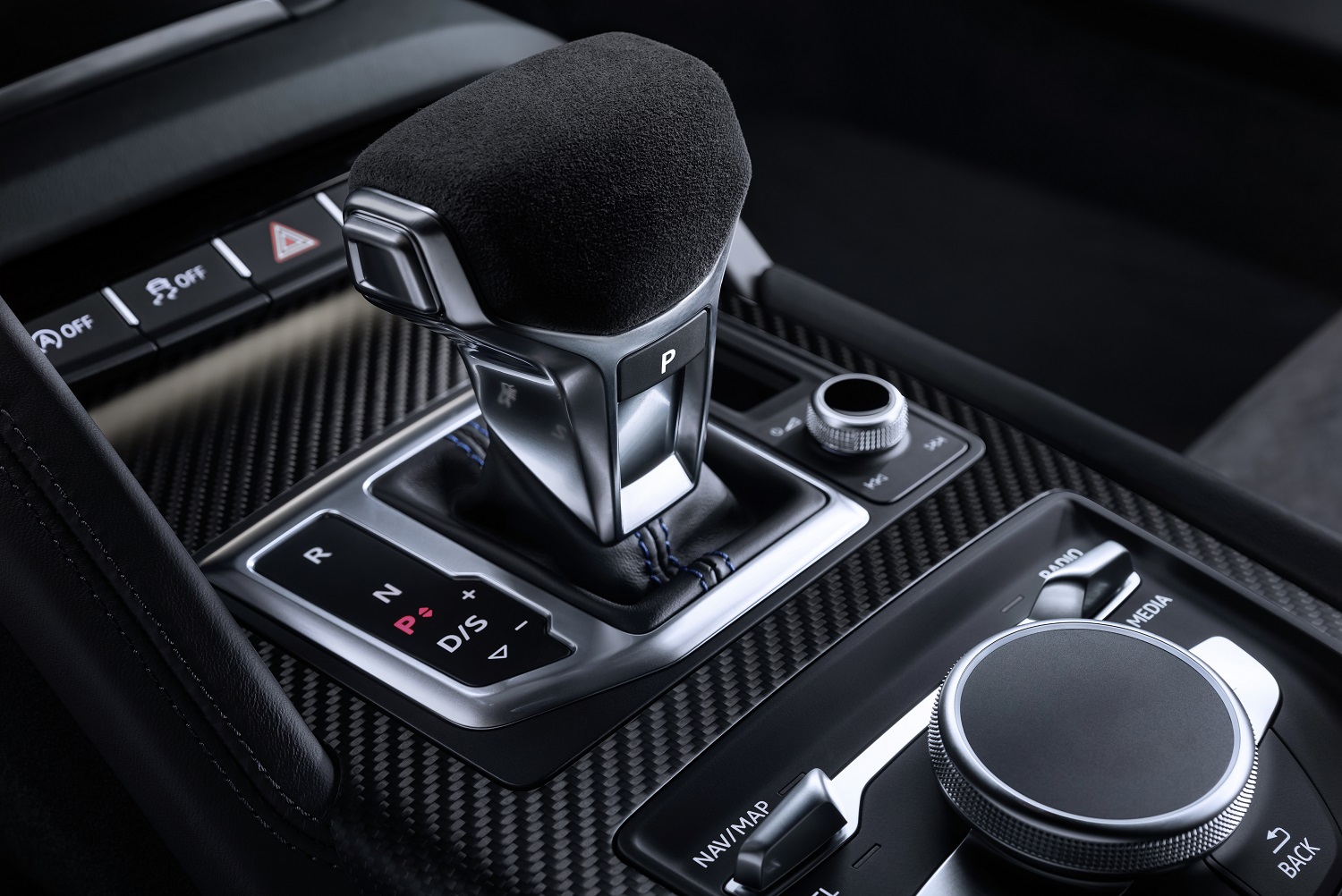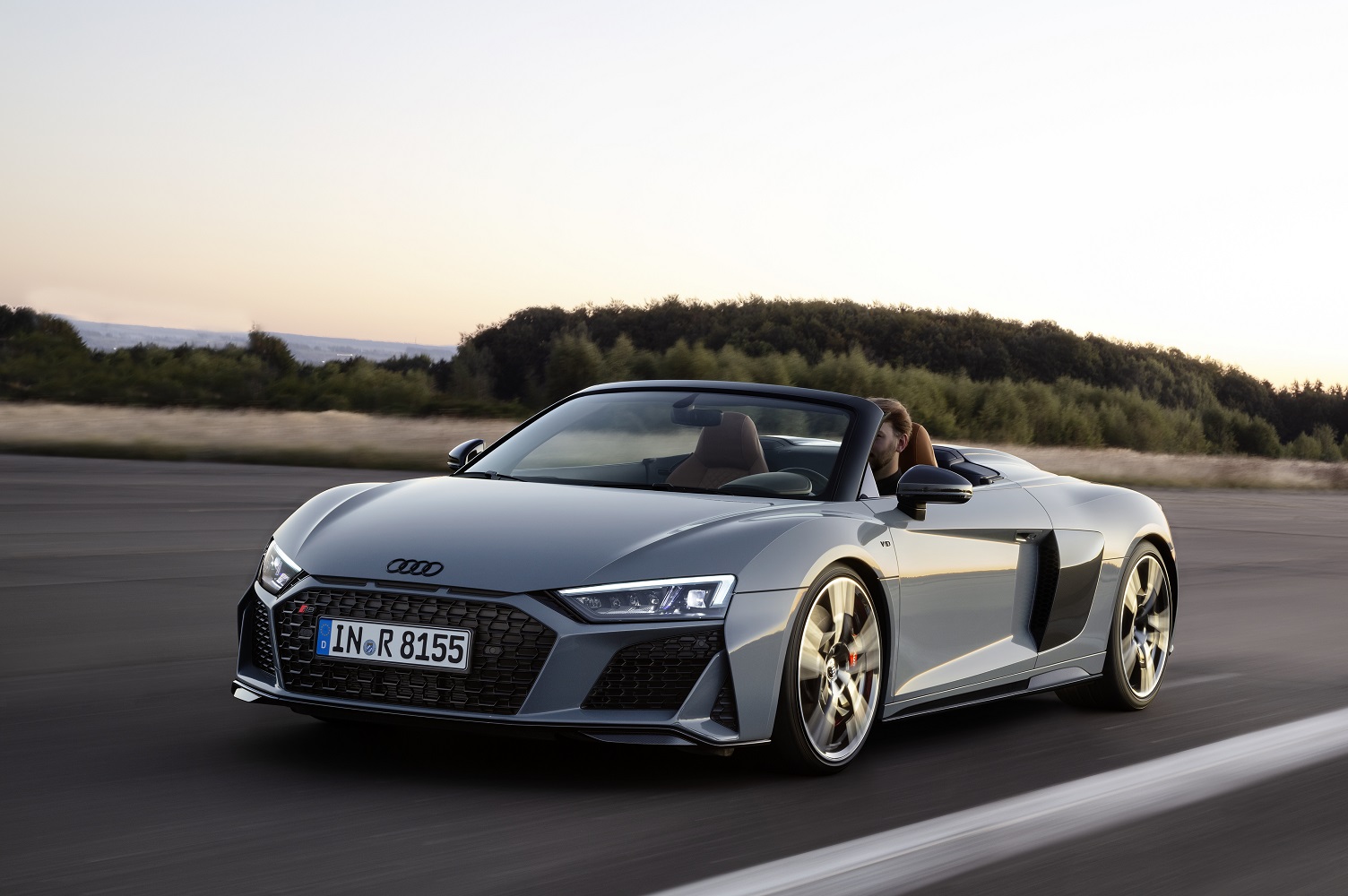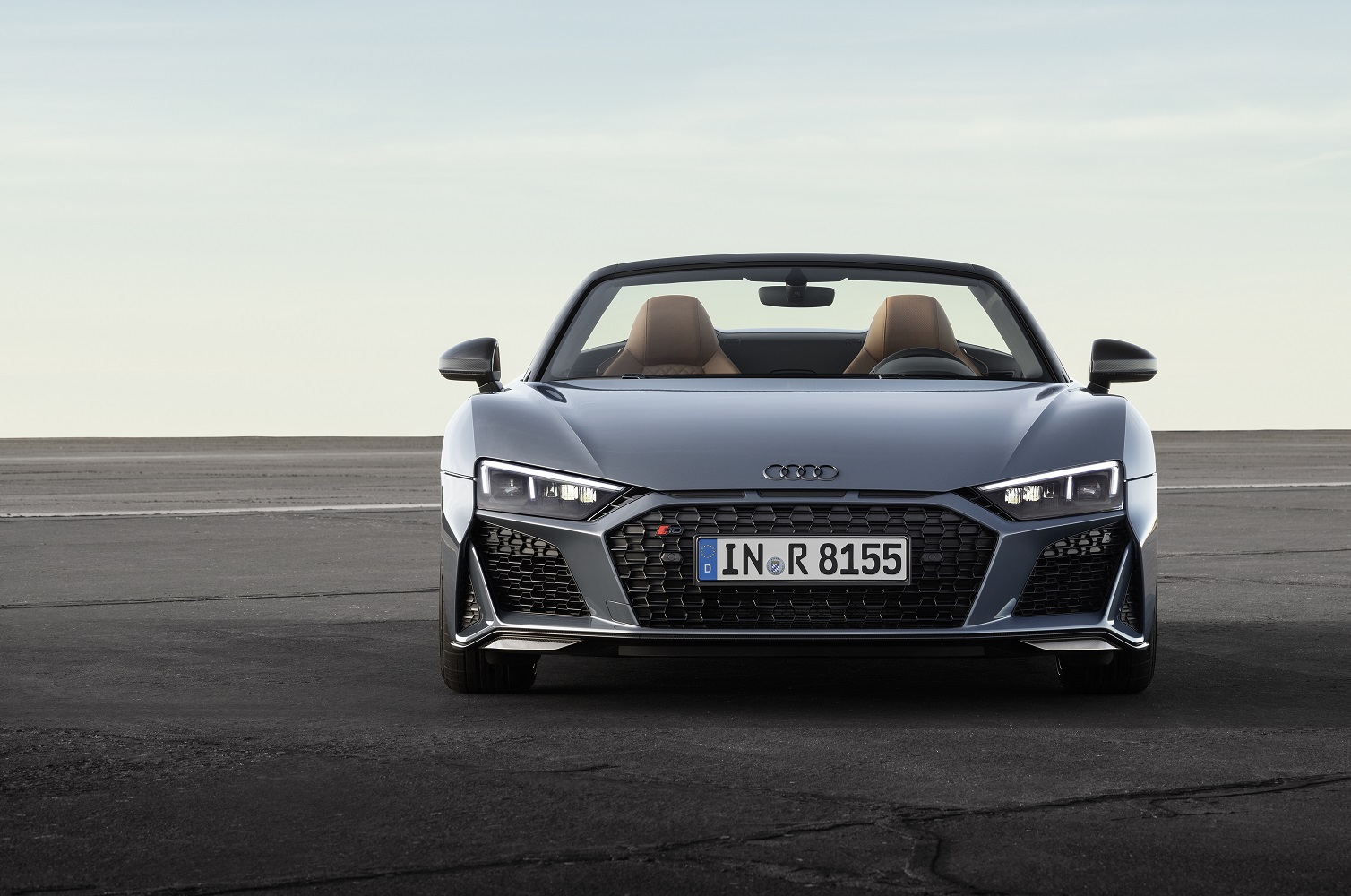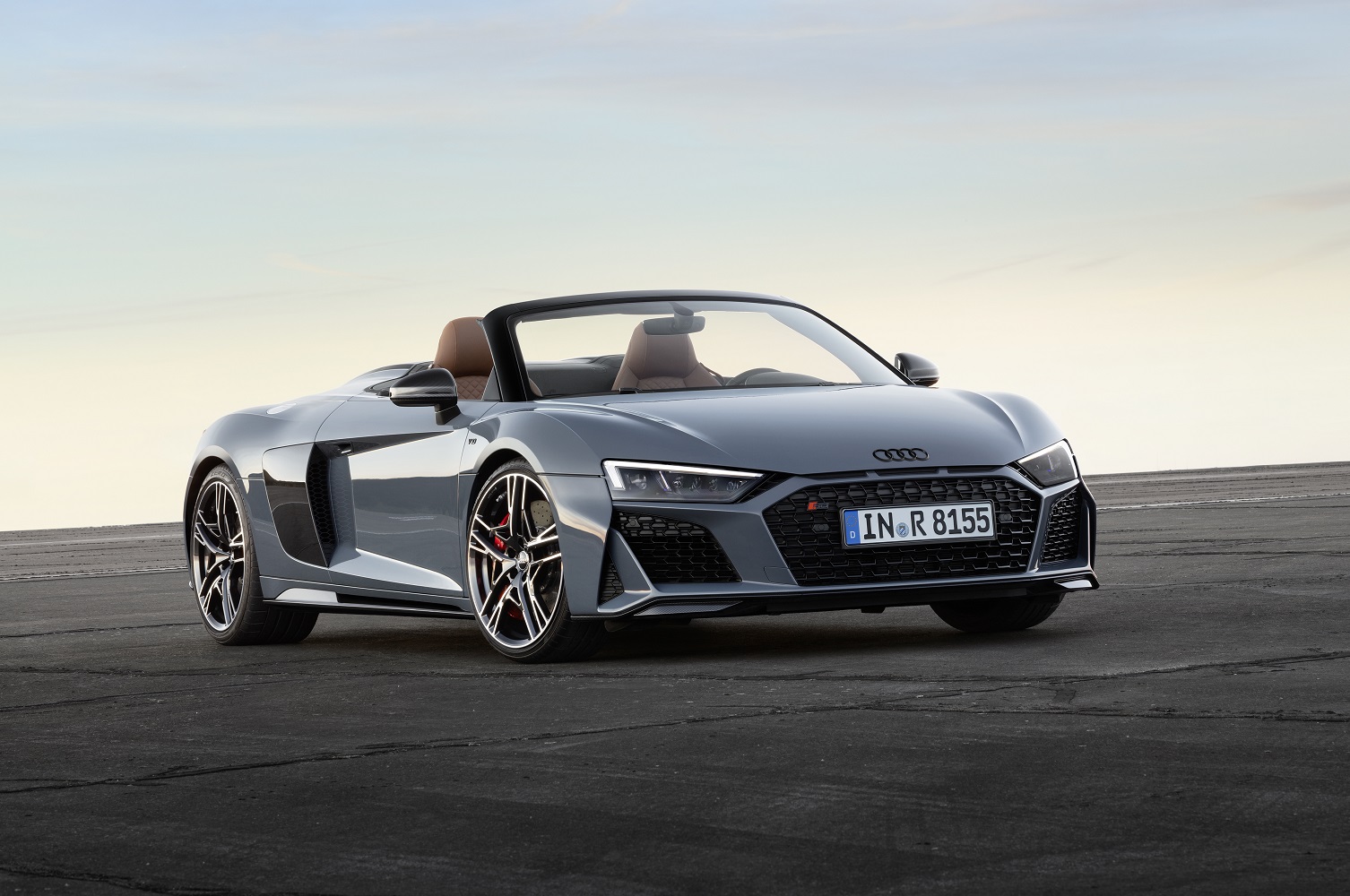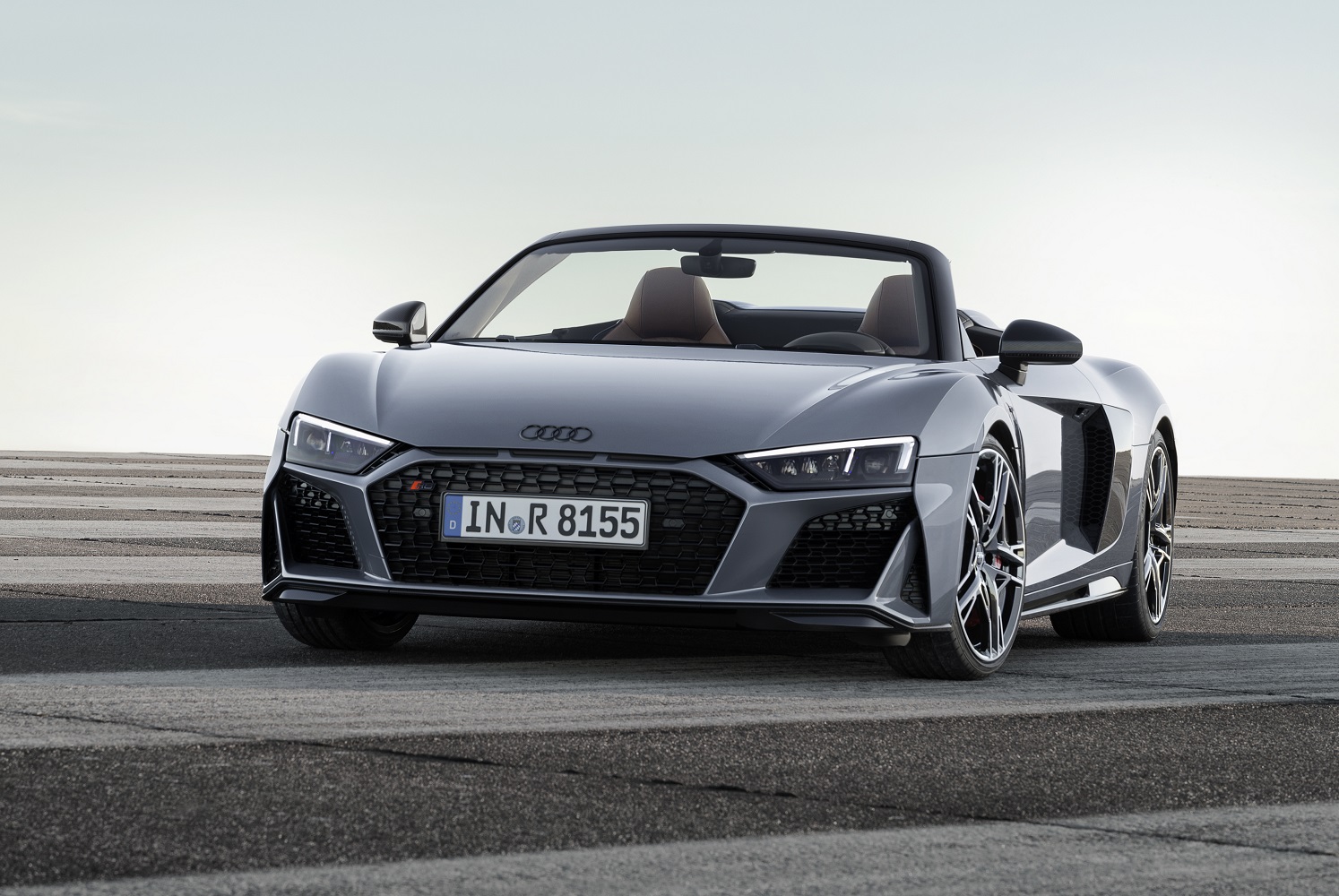The mid-engined Audi R8 just got better.
Audi has given the coupe and convertible versions of its range-topping model an array of design, tech, and mechanical updates that come together to increase its desirability. Let’s start with the front fascia, which looks more chiseled and more aggressive than before. The frame around the grille underlines the LED headlights and receives three rectangular air vents positioned right below the hood. The vents are a heritage-laced styling cue added as a tribute to the rally-winning Sport Quattro coupe made during the 1980s.
Walk around back and you’ll notice smaller design changes. The air vent below the lights is lower than before, according to Audi, and the diffuser is bigger. Nineteen-inch alloy wheels add a final touch of sportiness to the design. Super-light 20-inch units are offered at an extra cost for buyers looking to shed as much weight as possible. Those who take that route — which inevitably leads to hot laps at the track — will also want to get the carbon ceramic brakes and the front stabilizer bar made with a mix of carbon fiber and aluminum.
The R8 doesn’t succumb to the industry-wide trend of offering downsized engines. It carries on with a naturally-aspirated, 5.2-liter V10 engine closely related to the unit that powers the Lamborghini Huracan. Audi promises it will continue to offer two variants of the 10-cylinder engine but it is keeping full technical details under wraps. British magazine Autocar has learned the standard model packs 562 horsepower and 406 pound-feet of torque, increases of 30 and 10, respectively, over the outgoing R8. The Performance model ups the ante with 611 hp and 417 lb-ft. of torque.
A seven-speed, dual-clutch automatic transmission and the firm’s Quattro all-wheel-drive system come standard regardless of how much power the V10 makes. The well-received, tail-happy rear-wheel-drive model could return a little bit later in the production run; keep your fingers crossed if you like your R8 sideways.
While you can’t see the software changes, Audi promises you’ll feel them when driving the R8 on a twisty road. Engineers have recalibrated the steering system for increased response and feedback. They have also added three profiles to the drive mode selector called dry, wet, and snow, respectively, that modify dynamic parameters (like the firmness of the suspension and the sharpness of the throttle response) according to different road conditions. Finally, tweaking the ESC settings reduced the car’s stopping distance.
In Europe, the updated R8 will begin arriving in showrooms in early 2019. Audi will release pricing information and complete technical data in the weeks leading up to the model’s on-sale date. We don’t have details about the American-spec version of the car yet. An Audi representative told Digital Trends information about the model we’ll get here hasn’t been finalized so it won’t be announced until later.
Updated 10-31-2018: Added information about the U.S.-spec model.
Editors' Recommendations
- Audi Q6 e-tron ushers in the automaker’s next EV phase
- Audi ActiveSphere concept is part luxury sedan, part pickup truck
- Audi’s SkySphere electric roadster has shape-shifting superpowers
- Audi’s electric 2022 Q4 E-Tron packs big tech, lots of space in compact package
- Audi’s electric 2022 RS E-Tron GT is a concept that escaped the drawing board

